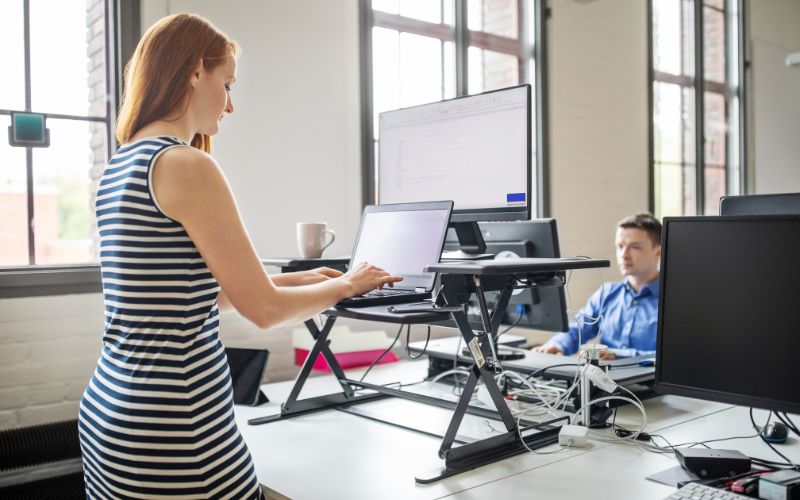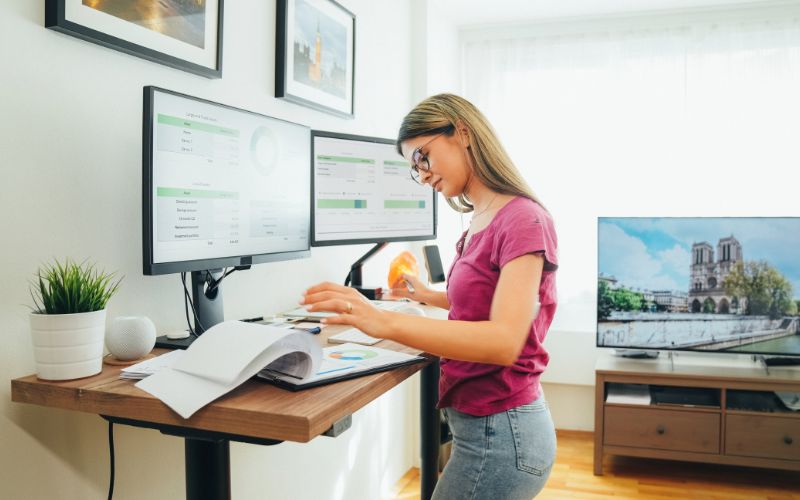Understanding Ergonomics
Ergonomics is the study of how people interact with their environment, specifically with regard to their physical comfort and health. This study includes the design of workstations, tools, and equipment, as well as the processes involved in performing tasks. The goal of ergonomics is to ensure that people can perform their tasks safely, efficiently, and comfortably.
The Importance of an Ergonomics Program
Having a well-designed ergonomics program can benefit both employees and organizations. For employees, it can reduce the risk of musculoskeletal disorders, such as back pain, carpal tunnel syndrome, and neck strain. For organizations, it can increase productivity, reduce absenteeism, and improve employee morale.
Tips to Accelerate Your Ergonomics Process
Establish an Ergonomics Team
Having a dedicated team to handle ergonomics can help streamline the process. This team should consist of individuals with expertise in ergonomics, including occupational health and safety specialists, physical therapists, and ergonomics consultants. They can work together to identify ergonomic issues and recommend solutions.
Conduct Ergonomic Assessments
Conducting ergonomic assessments is an essential step in identifying ergonomic issues. These assessments can be done by observing employees working, reviewing injury data, and conducting surveys. This information can help determine which areas need improvement.
Prioritize Ergonomic Solutions
Once you’ve identified ergonomic issues, prioritize them based on their severity and potential impact on employee health and productivity. This will help you focus on the most critical issues first and implement solutions quickly.
Involve Employees in the Process.
Involving employees in the ergonomics process can increase their engagement and help identify potential ergonomic issues. Encourage employees to report discomfort or pain and provide feedback on potential solutions.
Consider Technology Solutions
Technology can help accelerate the ergonomics process. For example, using ergonomic software can help identify ergonomic risks and recommend solutions. Wearable technology can also track employee movements and provide real-time feedback on posture and movement.
Implement Ergonomic Solutions
Once you’ve identified ergonomic issues and potential solutions, it’s time to implement them. This can involve adjusting workstations, modifying tools and equipment, or changing work processes. Be sure to communicate the changes to employees and provide training on how to use the new solutions.
Monitor and Evaluate the Program
Monitoring and evaluating the ergonomics program is crucial to ensure its effectiveness. Regularly review injury data, conduct surveys, and gather feedback from employees. This information can help identify areas for improvement and ensure that the program continues to meet its goals.
FAQ
The ergonomic process involves four steps, which are:
- identifying ergonomic hazards
- Assessing the risks associated with these hazards
- Implementing solutions to control the hazards
- And evaluating the effectiveness of these solutions.
By following these steps, organizations can create a safe and comfortable work environment for their employees while also enhancing productivity and minimizing injuries.
The four principles of ergonomics are:
1) maintain a neutral body posture.
2) reduce excessive force.
3) minimize repetitive motions.
4) avoid awkward postures.
These principles help to ensure that the body is in a natural and comfortable position while performing work tasks, which can reduce the risk of musculoskeletal disorders and other injuries.
The five aspects of ergonomics are: physical ergonomics, cognitive ergonomics, organizational ergonomics, environmental ergonomics, and macro-ergonomics. Physical ergonomics involves the design of workstations, tools, and equipment to optimize worker safety and productivity. Cognitive ergonomics focuses on mental workload, decision-making, and human-computer interaction. Organizational ergonomics addresses the design of work systems, management practices, and communication to optimize overall productivity and employee well-being. Environmental ergonomics involves the design of physical environments to optimize comfort, safety, and health. Macro-ergonomics focuses on the optimization of entire systems, such as transportation systems, healthcare systems, and manufacturing systems.
The three types of ergonomics are: physical ergonomics, cognitive ergonomics, and organizational ergonomics. Physical ergonomics focuses on the design of workstations, tools, and equipment to optimize worker safety and productivity. Cognitive ergonomics focuses on mental workload, decision-making, and human-computer interaction. Organizational ergonomics addresses the design of work systems, management practices, and communication to optimize overall productivity and employee well-being.







